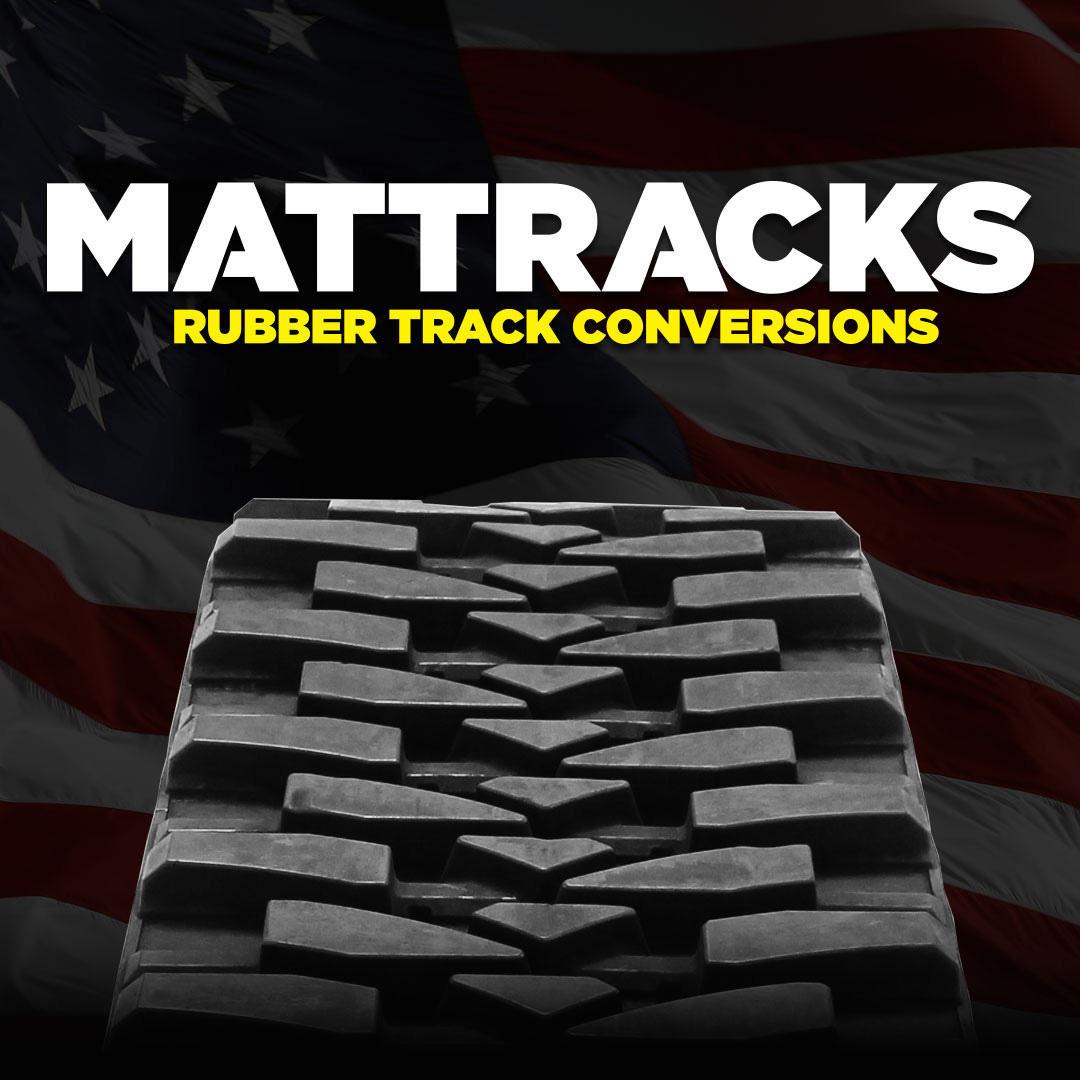Mattracks: Unleashing Unstoppable Off-Road Capability
Mattracks: Unleashing Unstoppable Off-Road Capability cars.truckstrend.com
An Engaging Introduction
Imagine a world where your vehicle is no longer limited by the constraints of paved roads, deep snowdrifts, treacherous mud, or shifting sands. A world where the most remote and challenging terrains become not obstacles, but pathways. This is the promise of Mattracks, a revolutionary concept that transforms conventional wheeled vehicles into formidable, all-terrain machines. More than just a set of tracks, Mattracks are sophisticated rubber track conversion systems designed to replace a vehicle’s tires, offering unparalleled traction, flotation, and stability across virtually any landscape.
Mattracks: Unleashing Unstoppable Off-Road Capability
From recreational adventurers seeking to conquer the wildest trails to commercial operators requiring reliable access in extreme conditions, Mattracks have redefined what’s possible for off-road mobility. They represent a paradigm shift in vehicle capability, allowing trucks, SUVs, ATVs, UTVs, tractors, and even specialized equipment to navigate environments previously deemed impassable. This comprehensive guide will delve into every facet of Mattracks, exploring their mechanics, benefits, applications, considerations, and practical insights to help you understand and leverage the full potential of these incredible systems.
What are Mattracks? The Core Concept
At its heart, a Mattracks system is an engineered solution that replaces a vehicle’s conventional tires with a set of four independent, self-contained rubber track assemblies. Each assembly consists of a durable rubber track, a drive sprocket that connects to the vehicle’s axle, and a series of idler and bogie wheels that distribute the vehicle’s weight and guide the track. These components are integrated into a robust, specialized frame that bolts directly onto the vehicle’s existing wheel hubs, typically without requiring significant modifications to the suspension or drivetrain.
The genius of Mattracks lies in their design, which combines the durability and traction of traditional tracked vehicles (like tanks or bulldozers) with the versatility and ease of installation of wheeled vehicles. Unlike a standard tire, which concentrates vehicle weight on a small contact patch, a track system spreads the weight over a much larger surface area. This significantly reduces ground pressure, enabling the vehicle to "float" over soft terrain like deep snow, sand, or mud, where tires would simply sink. The aggressive tread patterns on the rubber tracks provide an immense grip, allowing the vehicle to climb steep, slippery inclines or traverse rocky, uneven surfaces with remarkable stability.
Key components within each Mattracks unit include:
- Rubber Track: The continuous loop of reinforced rubber with aggressive tread patterns, designed for maximum grip and durability.
- Drive Sprocket: A toothed wheel that replaces the vehicle’s wheel hub, engaging with the track’s internal lugs to propel the system.
- Suspension System: Often an independent, internal suspension within the track frame that allows the track to articulate over uneven terrain, maintaining ground contact and absorbing shocks.
- Idler Wheels: Wheels at the front and rear of the track frame that guide the track and help maintain tension.
- Bogie Wheels: A series of smaller wheels along the bottom of the track frame that support the vehicle’s weight and distribute it evenly across the track’s contact patch.
- Frame/Chassis: The robust structure that houses all components and connects to the vehicle’s hub.
This sophisticated engineering allows for quick installation and removal, transforming a vehicle’s capabilities within hours, making it an invaluable tool for diverse applications.
The Unparalleled Benefits of Mattracks
The advantages of equipping a vehicle with Mattracks are numerous and transformative, extending far beyond simple off-road capability:
- Superior Traction: This is arguably the most significant benefit. The large contact patch and aggressive treads provide an unmatched grip on virtually any surface, from slick ice and deep snow to thick mud, loose sand, gravel, and rocky inclines. Vehicles that would be hopelessly stuck on tires can navigate challenging conditions with ease.
- Increased Flotation: By distributing the vehicle’s weight over a much larger area, Mattracks dramatically reduce ground pressure. This allows the vehicle to float over soft, unstable terrain like swamps, deep powder snow, or wet agricultural fields, preventing sinking and minimizing rutting.
- Enhanced Stability: The wider stance provided by the track systems, combined with a lower center of gravity, significantly improves vehicle stability, especially on side slopes or uneven terrain. This translates to safer operation in challenging environments.
- Unrivaled Versatility: Mattracks systems are designed to be highly adaptable. They can be fitted to a vast array of vehicles, from compact ATVs and UTVs to full-size pickup trucks, SUVs, commercial utility vehicles, agricultural tractors, and even specialized equipment. This versatility makes them a valuable asset across many industries and recreational pursuits.
- Year-Round Usability: For many vehicles, particularly recreational ones like ATVs or UTVs, Mattracks extend their usability from seasonal to year-round. A side-by-side that might sit idle in winter can become a snow-conquering machine for plowing, accessing remote cabins, or ice fishing.
- Reduced Ground Pressure & Environmental Impact: The low ground pressure of Mattracks is not only beneficial for vehicle mobility but also for the environment. It minimizes soil compaction in agricultural fields, reduces damage to sensitive ecosystems, and leaves a lighter footprint compared to heavily loaded wheeled vehicles.
- Increased Payload Capacity (in some conditions): While the tracks themselves add weight, their ability to distribute load over a larger area can, in certain soft-terrain scenarios, allow a vehicle to carry more weight than it could with tires without getting stuck.
Types and Applications of Mattracks Systems
Mattracks offers a diverse range of systems, each engineered for specific vehicle types, weight classes, and intended applications. Their product line is typically categorized by series, indicating the capacity and design for different vehicles:
- Personal/Recreational Systems (e.g., LiteFoot, XT, XT-UR Series):
- Vehicles: Primarily designed for ATVs, UTVs, and smaller 4×4 vehicles.
- Applications: Hunting, fishing, trail riding, accessing remote cabins, snow plowing, ice fishing, search and rescue in recreational settings. These systems are lighter and more nimble, enhancing the off-road capabilities of smaller vehicles.
- Light Truck/SUV Systems (e.g., 200, 400 Series):
- Vehicles: Full-size pickup trucks (Ford F-150/250/350, Chevy Silverado, Ram, Toyota Tundra), SUVs (Suburban, Tahoe, Excursion, Land Cruiser).
- Applications: Utility work, backcountry exploration, accessing remote worksites (telecom, power lines), surveying, overland travel, emergency response, and severe weather mobility for personal or commercial use. These systems provide substantial flotation and traction for heavier vehicles.
- Heavy Duty/Commercial Systems (e.g., 600, 800, 1500 Series):
- Vehicles: Medium-duty trucks, larger commercial vehicles, certain agricultural tractors, specialized utility vehicles, brush trucks.
- Applications: Forestry, oil and gas exploration, mining, construction, pipeline inspection, heavy-duty utility work, large-scale snow removal, and military applications. These are robust systems designed to handle significant payloads and continuous heavy-duty use in the most demanding industrial environments.
- Specialty/Agricultural Systems (e.g., specific tractor series):
- Vehicles: Various agricultural tractors, self-propelled sprayers, combines.
- Applications: Extending the operational window for farming in wet conditions, reducing soil compaction, improving traction for tillage and planting, and enabling year-round farm access.
- Custom and Industrial Solutions: Mattracks also develops custom solutions for unique industrial equipment, military vehicles, and specialized applications where extreme mobility is paramount.
The selection of a Mattracks system depends heavily on the vehicle’s gross vehicle weight (GVW), the desired payload, and the specific terrain and conditions it will operate in. Each series is engineered with different load capacities, track widths, and internal suspension designs to optimize performance for its intended use.
How to Choose and Install Mattracks
Acquiring and installing Mattracks is a significant step, and understanding the process is crucial for optimal performance and safety.
Choosing the Right System:
- Vehicle Compatibility: The first and most critical step is to ensure the Mattracks system is compatible with your specific vehicle make, model, and year. Mattracks offers different series and adapters for various bolt patterns and hub designs. Consult the manufacturer’s compatibility charts or a certified dealer.
- Intended Use & Terrain:
- Recreational vs. Commercial: Are you using it for occasional hunting trips or daily industrial operations?
- Terrain: Will you primarily encounter deep snow, soft mud, rocky trails, or a mix? Different track patterns and widths might be more suitable.
- Payload: How much weight will the vehicle typically carry? Ensure the chosen system’s weight rating exceeds your maximum anticipated GVW.
- Performance Expectations: Understand that Mattracks will alter your vehicle’s performance characteristics (e.g., top speed, fuel economy, turning radius). Choose a system that balances desired off-road capability with acceptable trade-offs.
- Budget: Mattracks represent a substantial investment. Factor in not just the purchase price but also potential installation costs, maintenance, and any necessary vehicle modifications.
Installation Guide (General Overview):
Mattracks systems are designed for relatively straightforward "bolt-on" installation, but they do require mechanical aptitude and proper tools. Many owners choose professional installation from an authorized dealer.
- Preparation: Park the vehicle on a level, stable surface. Engage the parking brake and chock the wheels. Gather necessary tools (heavy-duty jacks, jack stands, torque wrench, impact gun, general hand tools).
- Remove Wheels: Lift the vehicle and safely support it on jack stands. Remove all four wheels.
- Install Adapters/Hubs: Depending on the Mattracks model and vehicle, you might need to install specific adapters or modified hubs onto the existing vehicle axles. These adapters provide the mounting point for the Mattracks unit and ensure proper alignment.
- Mount Mattracks Units: Carefully lift each Mattracks unit and align it with the newly installed adapter or hub. Bolt the unit securely in place, ensuring all bolts are torqued to the manufacturer’s specifications. This step often requires a strong hoist or multiple people due to the weight of the units.
- Adjust Track Tension: Once all four units are installed, follow the manufacturer’s instructions to properly adjust the track tension. Correct tension is crucial for performance and track longevity. Too loose, and the track can de-rail; too tight, and it can cause excessive wear and strain on components.
- Final Checks: Double-check all bolted connections, ensure no lines or components are pinched, and verify proper clearance around the tracks. Lower the vehicle slowly.
- Test Drive: Conduct a slow, careful test drive in a safe area to ensure everything is functioning correctly. Listen for unusual noises and check for any issues before venturing into challenging terrain.
Installation time can range from a few hours for smaller ATV/UTV systems to a full day or more for heavy-duty truck systems, especially for a first-time installer.
Important Considerations and Potential Challenges
While Mattracks offer incredible advantages, it’s essential to be aware of the trade-offs and considerations:
- On-Road Use Limitations: Mattracks are primarily designed for off-road use. Driving them on paved roads for extended periods will significantly increase wear on the tracks and components, reduce top speed, decrease fuel efficiency, and can lead to excessive noise and vibration. Some jurisdictions may have legal restrictions on track systems on public roads.
- Performance Impact:
- Reduced Top Speed: Vehicles equipped with Mattracks will have a substantially lower top speed compared to when on tires. The gearing ratio effectively changes, optimizing for torque over speed.
- Increased Fuel Consumption: The added weight, rolling resistance, and altered gearing will lead to a noticeable decrease in fuel economy.
- Altered Handling: Turning radius will increase, and steering will feel heavier. Driving requires adapting to a different dynamic.
- Cost of Investment: Mattracks systems represent a significant upfront investment, ranging from several thousand dollars for ATV/UTV systems to tens of thousands for heavy-duty truck or commercial systems. This cost should be weighed against the enhanced capability and utility they provide.
- Weight Addition: The track systems add considerable weight to the vehicle, which can impact its overall gross vehicle weight rating (GVWR) and potentially reduce payload capacity in some cases.
- Wear and Tear: Like any heavy-duty equipment, Mattracks components are subject to wear, particularly the rubber tracks themselves, idler wheels, and bearings. Operating on abrasive surfaces (like gravel or asphalt) will accelerate this wear. Regular inspection and maintenance are crucial.
- Storage: When not in use, Mattracks units are bulky and heavy, requiring adequate storage space.
- Maintenance: Regular inspection, cleaning, lubrication of bearings, and proper track tension adjustments are vital for extending the lifespan of the system. Replacement parts can be expensive.
Tips for Maximizing Your Mattracks Experience
To get the most out of your Mattracks system and ensure its longevity, consider these practical tips:
- Match System to Need: Reiterate the importance of selecting the correct model for your vehicle and primary application. Over-specifying or under-specifying can lead to inefficiencies or premature wear.
- Professional Installation (Recommended): If you’re not mechanically inclined, invest in professional installation by an authorized Mattracks dealer. This ensures proper setup, alignment, and tension, which are critical for performance and safety.
- Adhere to Maintenance Schedules: Follow the manufacturer’s recommended maintenance schedule diligently. This includes regular cleaning, checking track tension, inspecting for damage (cuts, tears, excessive wear), lubricating grease points, and checking bolt torques.
- Understand Performance Changes: Before tackling challenging terrain, spend time getting accustomed to how your vehicle handles with Mattracks. Practice turning, braking, and accelerating in a safe environment.
- Drive Appropriately: Avoid high speeds, especially on hard surfaces. Drive smoothly, avoid sudden turns or aggressive braking, and select appropriate gears for the terrain.
- Pre-Trip Inspection: Before any significant off-road excursion, perform a quick visual inspection of all four Mattracks units. Check for debris lodged in the tracks, proper tension, and any visible damage.
- Consider Accessories and Spares: Depending on your usage, consider carrying essential spares like a spare bogie wheel or tools for minor field adjustments. Track protectors can be useful if frequently traversing sharp, abrasive terrain.
- Check Local Regulations: Be aware of any local or regional laws regarding track systems on public roads or specific land-use areas.
Mattracks Estimated Price Table (Representative)
Please Note: Prices for Mattracks systems vary significantly based on the specific model, vehicle compatibility, dealer, regional market conditions, and whether installation is included. The figures below are estimated ranges in USD and should be used for general guidance only. Always consult an authorized Mattracks dealer for current and accurate pricing for your specific needs.
| System Type / Vehicle Class | Estimated Price Range (USD) | Key Features / Notes |
|---|---|---|
| ATV/UTV Systems | $4,000 – $8,000 | Designed for smaller, lighter recreational vehicles. Excellent for snow, mud, and light trails. Models like XT, XT-UR, LiteFoot series. Easy installation. |
| Light Truck/SUV Systems | $25,000 – $45,000 | For full-size pickups (F-150/250, Silverado, Ram) and large SUVs. Offers significant flotation and traction for utility, exploration, and emergency use. Models like 200, 400 series. |
| Heavy Duty/Commercial Systems | $45,000 – $80,000+ | For medium-duty trucks, heavy commercial vehicles, and some agricultural equipment. Engineered for extreme loads and continuous industrial use. Models like 600, 800, 1500 series. Highly robust. |
| Agricultural/Specialty Systems | $60,000 – $120,000+ | Custom-engineered for specific tractors, sprayers, or specialized equipment. Focus on reducing soil compaction and maximizing field access/efficiency. Price varies greatly by machine. |
Disclaimer: Prices do not include shipping, taxes, or professional installation costs, which can add several thousand dollars to the total. Contact an authorized Mattracks dealer for a precise quote.
Frequently Asked Questions (FAQ)
Q: Can I drive Mattracks on paved roads?
A: While technically possible for short distances, it’s not recommended. Driving on paved roads significantly increases wear on the tracks and components, reduces top speed, decreases fuel efficiency, and can cause excessive vibration and noise. Mattracks are designed for off-road use.
Q: How fast can I go with Mattracks?
A: Top speed is significantly reduced when using Mattracks. It varies by vehicle and Mattracks model, but generally, speeds are limited to 20-40 mph (30-65 km/h) on appropriate terrain. High speeds on hard surfaces are strongly discouraged due to wear and handling characteristics.
Q: Do Mattracks affect fuel economy?
A: Yes, Mattracks will decrease your vehicle’s fuel economy. The added weight, increased rolling resistance, and altered gearing ratio (optimized for torque, not speed) all contribute to higher fuel consumption.
Q: How long do Mattracks last?
A: The lifespan of Mattracks depends heavily on usage, terrain, and maintenance. With proper care and operation, tracks can last for thousands of hours or miles. Driving on abrasive surfaces (like asphalt or gravel) or neglecting maintenance will significantly shorten their lifespan. Components like bogie wheels and bearings also require periodic inspection and replacement.
Q: Are Mattracks hard to install?
A: Mattracks are designed for "bolt-on" installation, meaning they generally don’t require extensive vehicle modification. However, the units are heavy, and proper alignment and torque are crucial. Mechanical aptitude and heavy-duty lifting equipment are often required. Many owners opt for professional installation by an authorized dealer.
Q: What vehicles are compatible with Mattracks?
A: Mattracks manufactures systems for a wide range of vehicles, including ATVs, UTVs, pickup trucks (light to heavy-duty), SUVs, agricultural tractors, and various commercial and industrial vehicles. Compatibility depends on the specific vehicle’s make, model, year, and bolt pattern. Always consult the Mattracks compatibility guide or a dealer.
Q: Are Mattracks street legal?
A: Street legality varies by jurisdiction. In many areas, track systems are not permitted on public roads due to concerns about road damage, speed limitations, and safety. Always check your local and state regulations before operating a Mattracks-equipped vehicle on public thoroughfares.
Q: What’s the difference between Mattracks models (e.g., 200, 400, XT)?
A: Mattracks models are typically categorized by their load capacity, design, and intended vehicle type.
- XT/XT-UR/LiteFoot: Designed for ATVs and UTVs, lighter capacity.
- 200/400 Series: For light to medium-duty trucks and SUVs.
- 600/800/1500 Series: For heavy-duty commercial vehicles, large trucks, and some industrial applications, offering the highest load capacities.
The specific series indicates the engineering and robustness suitable for different vehicle weights and demands.
Concluding Summary
Mattracks represent a pinnacle of off-road engineering, transforming the capabilities of conventional wheeled vehicles into truly unstoppable machines. By replacing tires with robust rubber track systems, they unlock unparalleled traction, flotation, and stability across the most challenging terrains imaginable, from deep snow and treacherous mud to loose sand and rocky landscapes. While they demand a significant investment and come with specific operational considerations like reduced speed and altered handling, the benefits for those requiring extreme mobility – be it for recreation, vital commercial operations, or critical emergency services – are profound. Mattracks don’t just get you from point A to point B; they redefine what point B is, opening up previously inaccessible worlds and ensuring that your vehicle is ready to conquer any challenge the wilderness, or the job site, throws its way.









